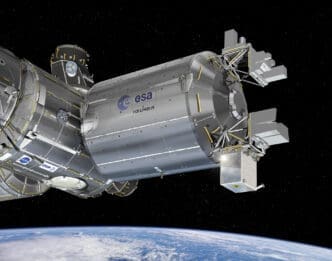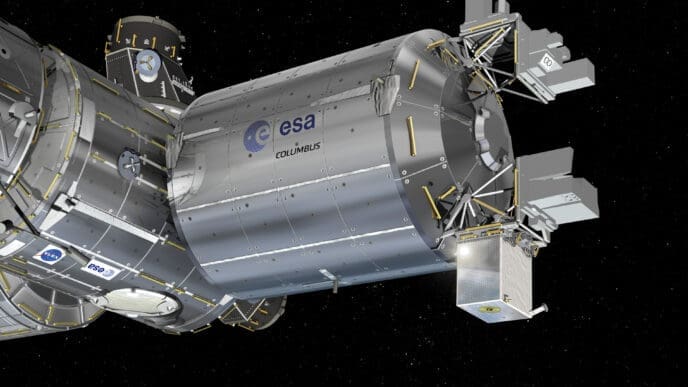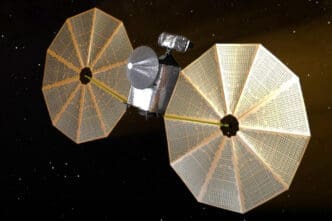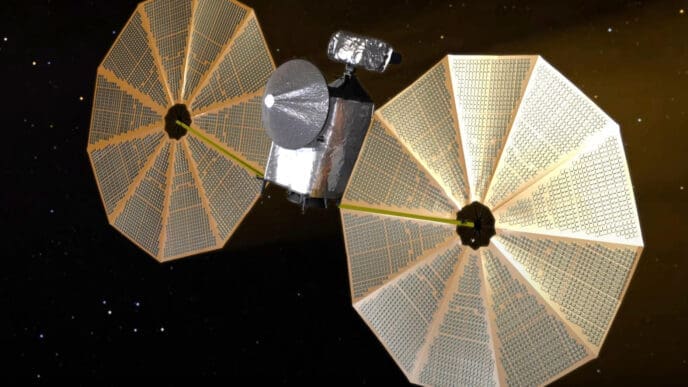SpaceX has marked a significant achievement by launching four Astranis-built satellites towards geostationary orbit (GEO) on December 29, 2024, from Cape Canaveral Space Force Station. This launch is a pivotal moment for Astranis, marking the first time a single commercial manufacturer has deployed four of its own satellites on one mission to GEO.
The Falcon 9 rocket, equipped with these satellites, successfully lifted off at midnight Eastern, placing them into a super-synchronous geostationary transfer orbit shortly after. As a testament to SpaceX’s engineering prowess, the Falcon 9’s first-stage booster was recovered post-launch, marking the 389th such recovery by the company.
Christian Keil, a spokesperson for Astranis, confirmed that three hours post-launch, signal acquisition was achieved. However, the satellites will require several months to reach their final positions and undergo comprehensive health checks before commencing commercial services.
The Block 2 batch of satellites, which includes NuView Alpha, NuView Bravo, Agila, and UtilitySat, features several technological advancements. Notably, these satellites possess a new Astranis-designed gimbal which is expected to extend their operational life beyond the standard seven years. Additionally, an enhanced deployable main reflector increases the throughput of the Ka-band from 10 Gbps to an impressive 12 Gbps per satellite.
Past challenges have led Astranis to innovate. Their previous satellite, Arcturus, experienced failures in its solar array drive assemblies. This malfunction hindered plans to deliver broadband services to Alaska and necessitated the satellite’s repositioning to Asia, supporting Israeli operator Spacecom’s orbital slot requirements.
The new batch, however, promises enhanced performance. NuView Alpha and Bravo are intended for inflight connectivity over the Americas for Anuvu, while Agila has been sold to Orbits Corp for services in the Philippines. Agila is particularly notable as the first communications satellite dedicated to the Philippines. UtilitySat is a versatile multi-mission satellite, initially providing communications across Mexico for Apco Networks but designed to serve multiple futures as needs arise.
John Gedmark, CEO of Astranis, expressed optimism, saying, “With this launch we will prove that Astranis can ship and operate multiple satellites at once.” He highlighted the company’s strides towards meeting increasing demand from both commercial and government sectors.
The significance of the December 29 launch is underscored by the fact that Astranis is now one of only four companies to launch four or more satellites to GEO within a calendar year, joining industry giants SES, Intelsat, and Eutelsat. This achievement occurs amidst a shifting satellite landscape, where GEO has been losing prominence to low Earth orbit (LEO) constellations.
Furthermore, Astranis has outpaced competitors in launching GEO satellites over the past two years, a notable feat given the declining interest in GEO due to the rise of LEOs. Meanwhile, companies like Switzerland’s Swissto12 are also entering the small GEO market, planning their satellite launches by 2026.
The recent launch of four Astranis satellites marks a crucial step in the evolution of GEO satellite deployments, showcasing the potential for scaled-up operations in this sector. As Astranis continues to innovate and overcome previous challenges, it positions itself prominently in the satellite industry, paving the way for future advancements and heightened competition.
Source: Spacenews












